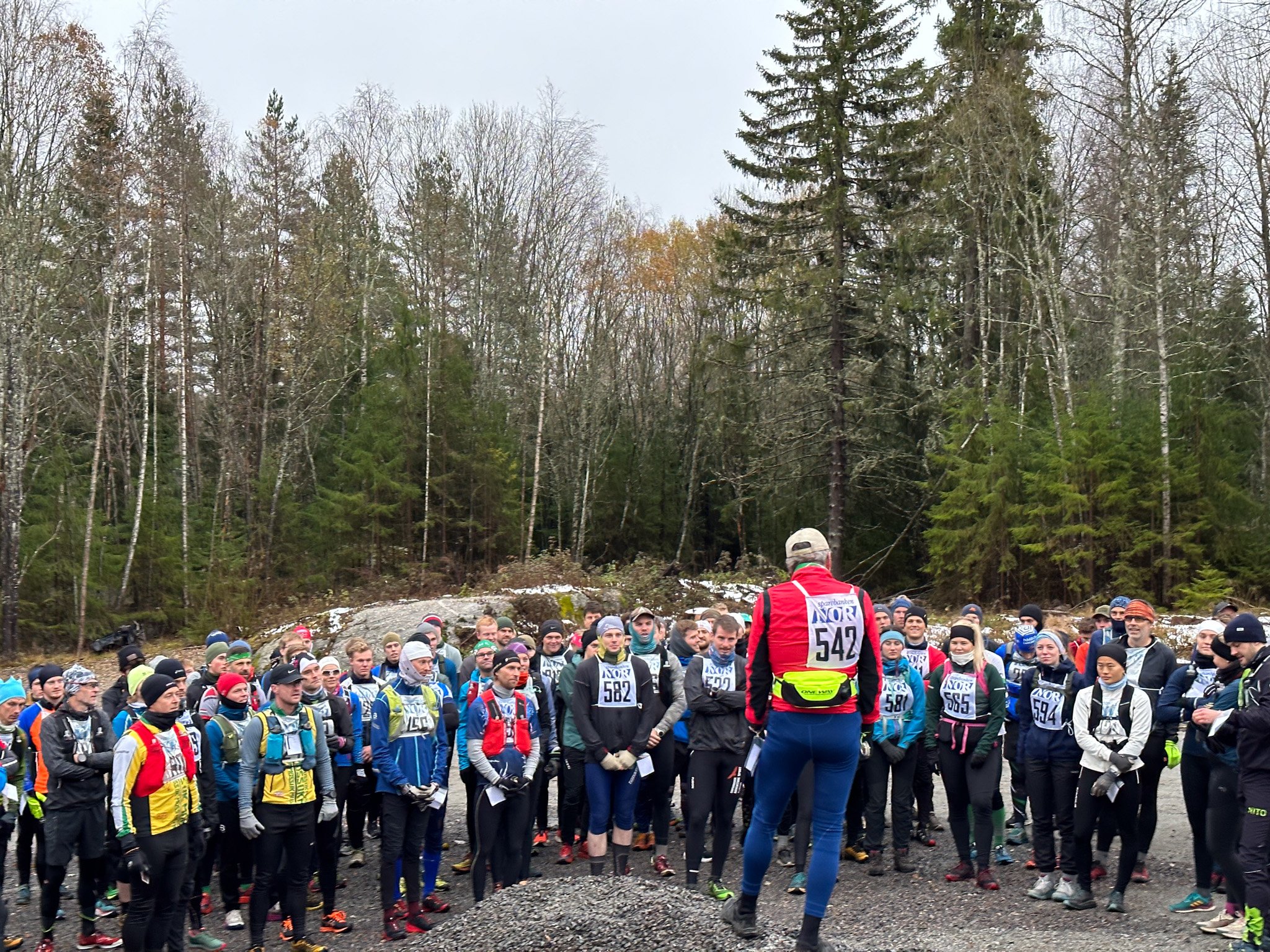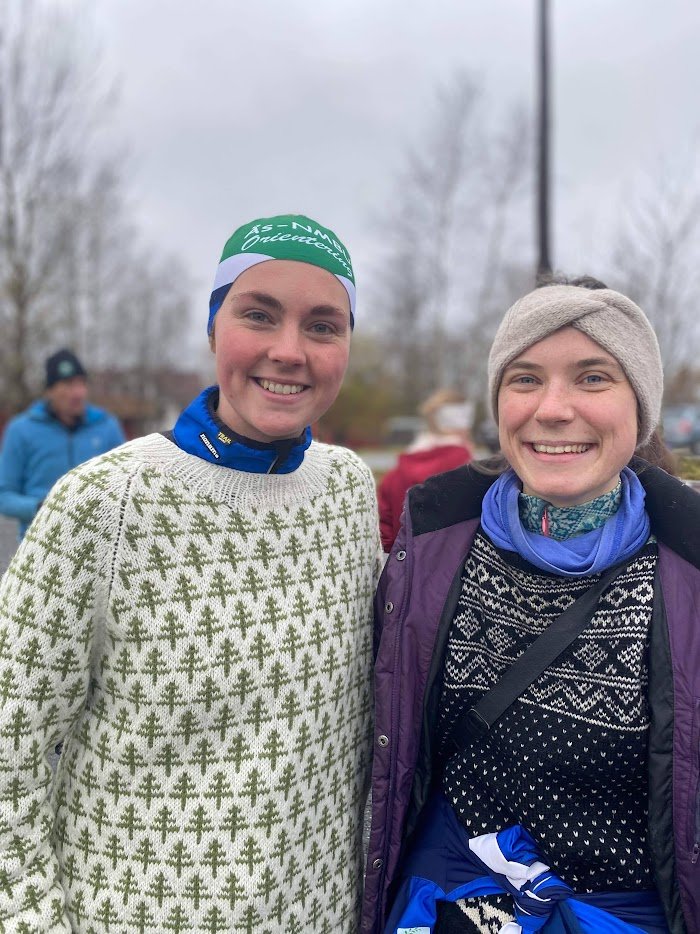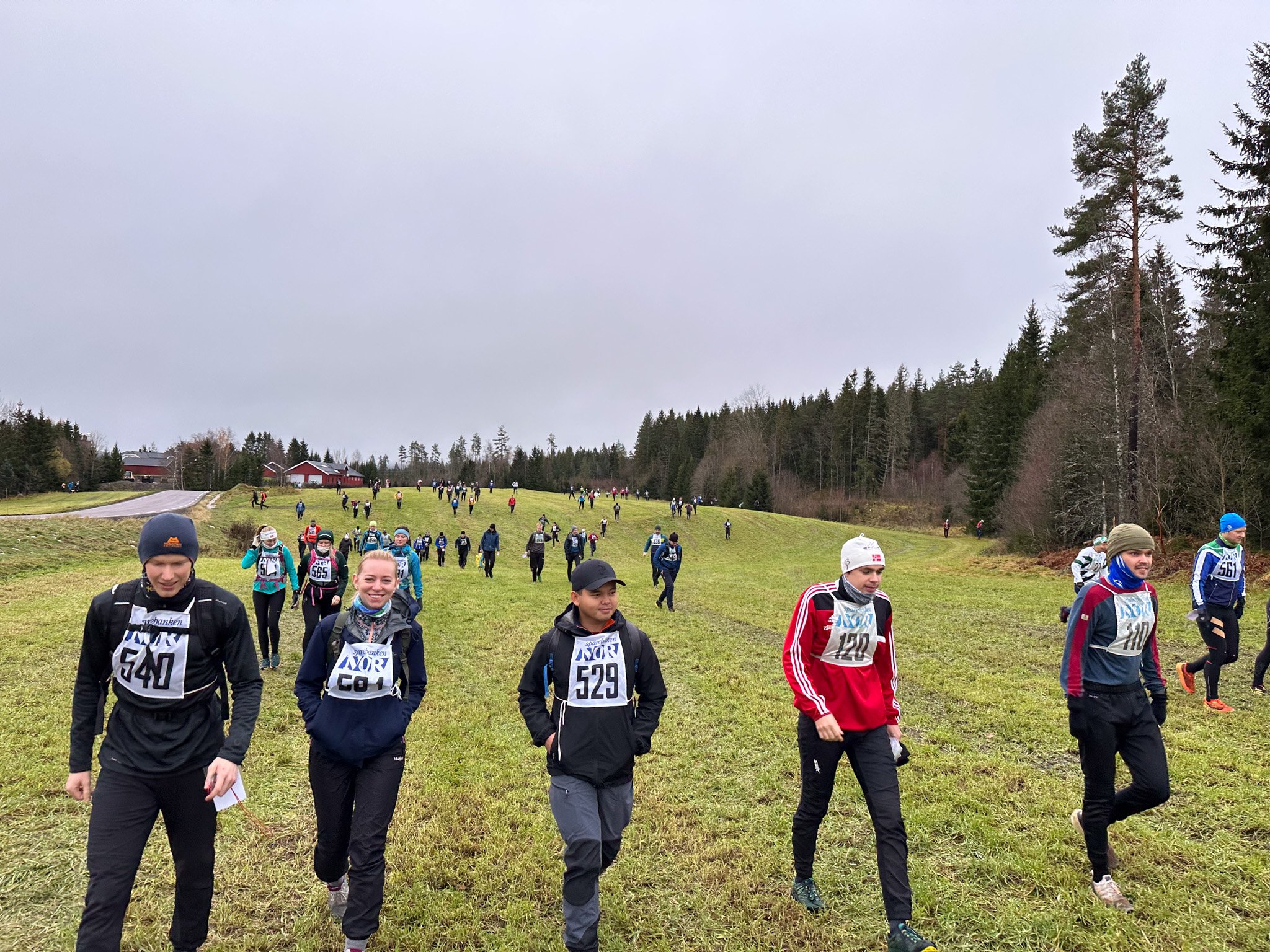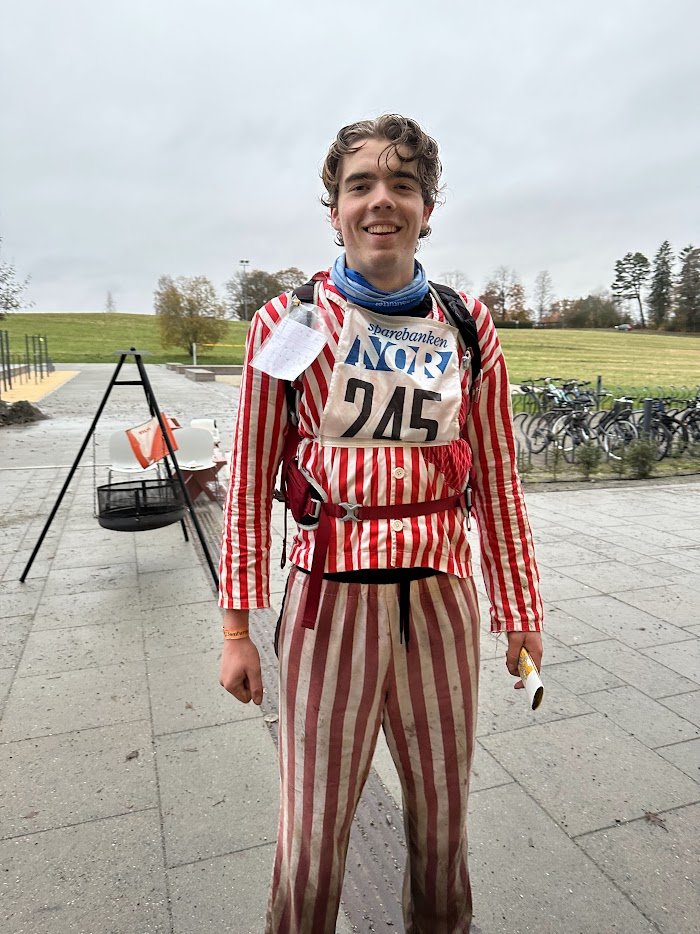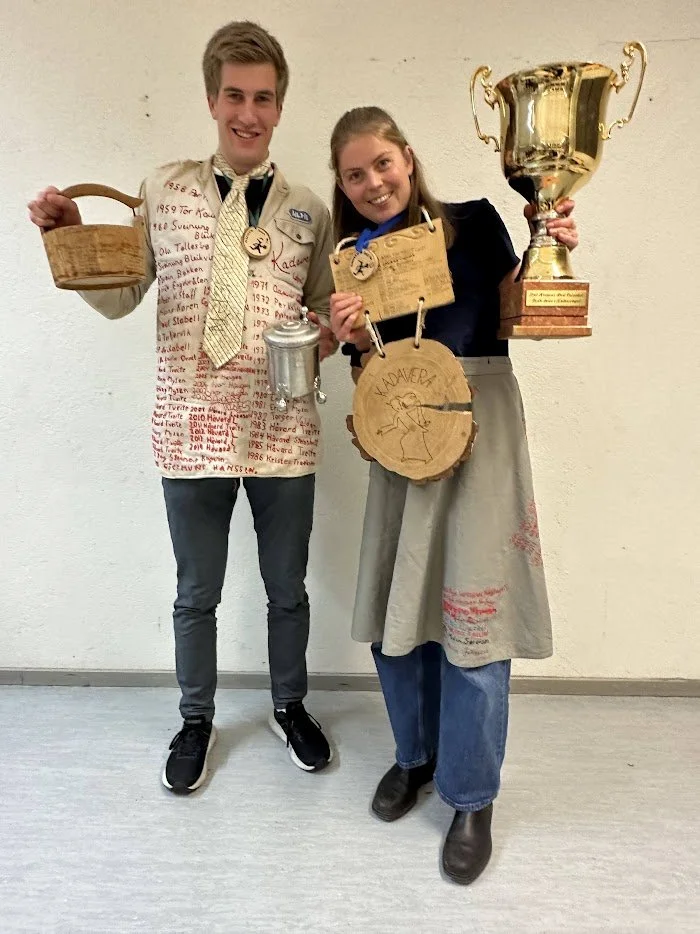Kadaver’n

Kadaver’n
Kadaverløpet (The carcass race), the oldest sports event on Ås, was well received, and it is said that it was once again a success. But what exactly is this, why did it happen, and lastly, who won?
Journalist: Martin Hansebråten
Photo: Ane Ingeborg Kalbækken
Translator: S. Faseeha F. Gillani
Web distributor: Martha Ingeborg Evensen
Tuntréet has had a conversation with Ane Ingeborg Kalbækken, the course designer of this year’s Kadaverløp. In the conversation, she explains a little about what Kadaver’n is, the history and how this year’s race has been. Kadaverløpet as we know it today was conceived at Hankattloften on a late autumn evening in 1958. It was supposed to be an extreme test of strength and was not supposed to be something for ordinary mortals. The concept was that one should be dropped of in a secret place and find the way back. This has gradually developed into the “extreme” orienteering race with three posts as we know it today
The participants are driven out to a secret location approx. 17 km as the crow flies (the straight-line distance between two points on a map). This year’s race started in Ytre Enebakk. The finish line for the race is the GG hall, i.e., the hall part of Eika for those who didn’t know. The GG Hall is named after Georg Guttormsen, better known as ‘Geggen’, who was a sports consultant at NLH, and was together with NLHI, now NMBUI, responsible for the event.
All participants at Kadaver’n will be given a map on a scale of 1:30,000 drawn by Kristen Trekrem, who, among other things, has drawn the hiking map for Ås municipality. He is in his early 60s and ran the race with a splendid position in 31st place. Since he is over 60, he is a so-called honorary casualty. Kadaverløpet is an open event, so that people who are no longer students, but “adults” can also participate. “It’s tough, but the old men are there year after year, so why shouldn’t a student be able to do it. In a way, you haven’t been a student at NMBU until you’ve run the Kadaver’n,” notes Kaldbækken.
The winner of this year’s Kadaver was Anders Haugskott, an O-runner who won with an impressive winning time of three hours and fifteen minutes. Ranveig Nordhagen was the best woman with a time of four hours and nine minutes. This is very impressive considering the distance, which is not only the 25.2 km the straightline distance between two points on a map. In reality, it’s between 30 and 40 km long. Those who missed and ran the furthest ran approx. 48 km.
The last place in the race is also an important figure. The person who comes in last place is known as Superkadaver, and this year the “winner” had a time of approx. 10 hours and 15 minutes. This year there were five runners who entered at the same time and received this honorable title. “All of them said they weren’t going to run again, but everyone was very pleased that they had finished. The last ones came in at 19.20, and we started the award ceremony at 19.00 in the TF wing, as is always the tradition. You always know who the superkadaver is, every year, because the results are read from the bottom up” she says laughing!
There are many different traditions linked to the race. For example, it is common for the first runner to reach the first post to run with a tie (Juntilaslipset) for the rest of the race, while the first woman runs with a skate (Spurtskautet). Speaking of exciting clothes, there is a competition between different associations to see who can have the most participants. In recent years, it has been PB which has had the most completing participants, explains Kalbækken.
PB always take part in large numbers, while Pikekoret IVAR is steadfast in taking part in Mini-kadaværn, a slightly shorter version of the race that is 10 km and slightly shorter: “We try to advertise it, but maybe we haven’t been so good at it. There is actually a prize for the best association. But now someone must beat PB, because they have always had the most people. Where is Rævne? Where is Unity? Where is FF?”
Nevertheless, this was an impressive year. A total of 120 completed this year’s race, twice as many as last year. Even more impressive was it when Kadaverløpet was not canceled by the corona, so it has now run continuously for 65 years, and as it is now it can run for another 65 years.
This was a small insight into the long, heavy, but also rewarding and historic Kadaverløpet. There is a reason why Hankattene are dressed in gala attire. Nevertheless, Kalbækken recommends that you bring a headlamp, as it can get dark. At the very end of the interview came Kalbækken, a real Tynsetting with a jab at Alvdal, which does not need to be repeated in plenary

